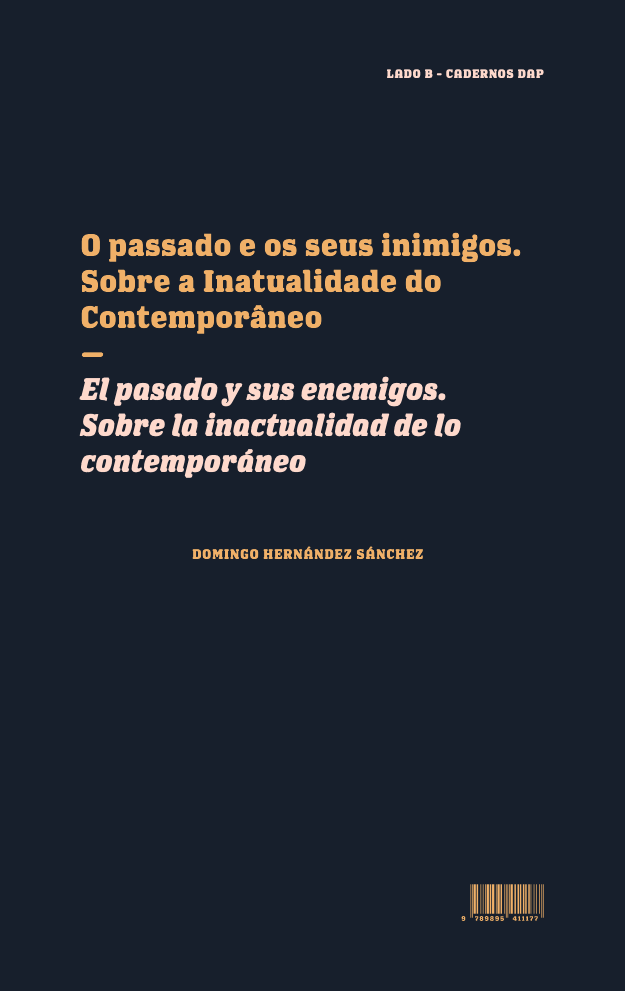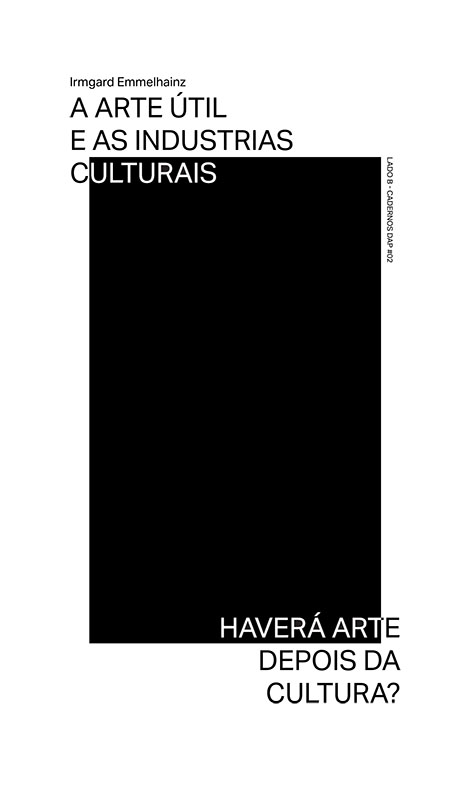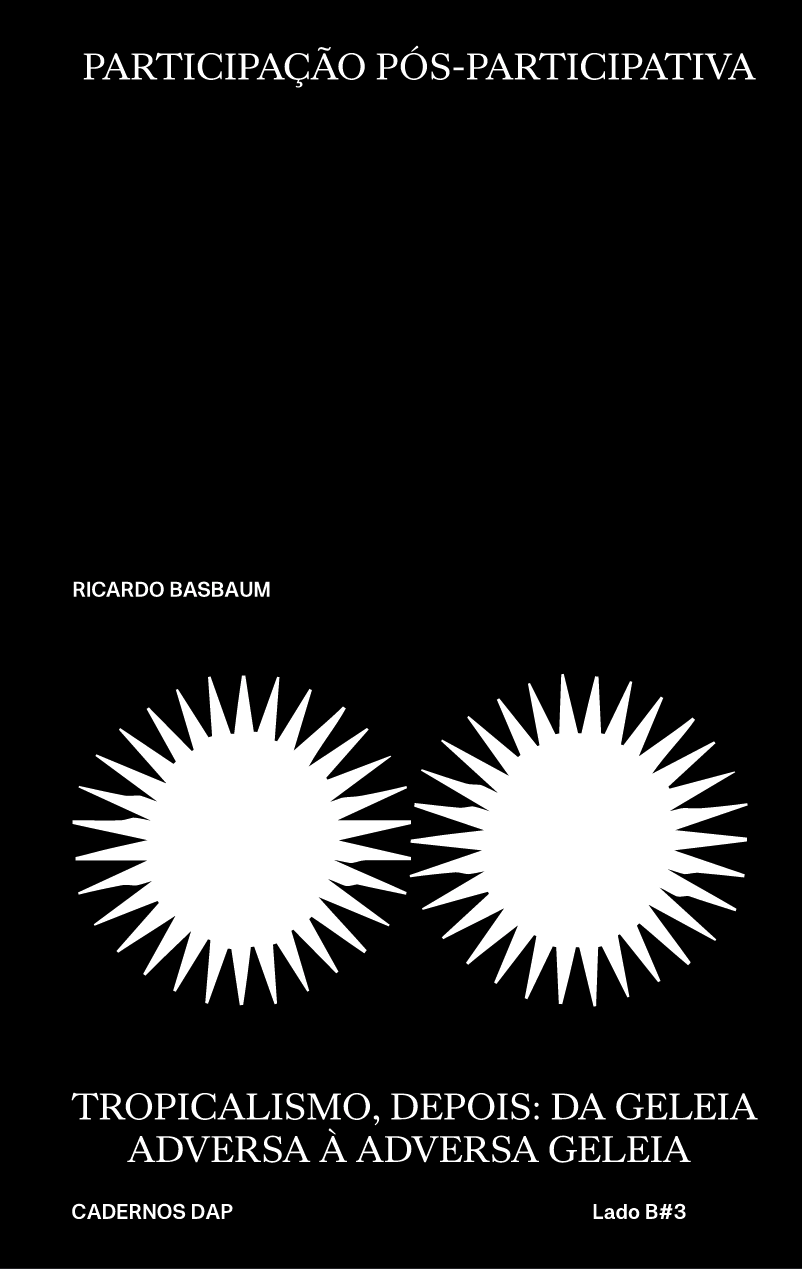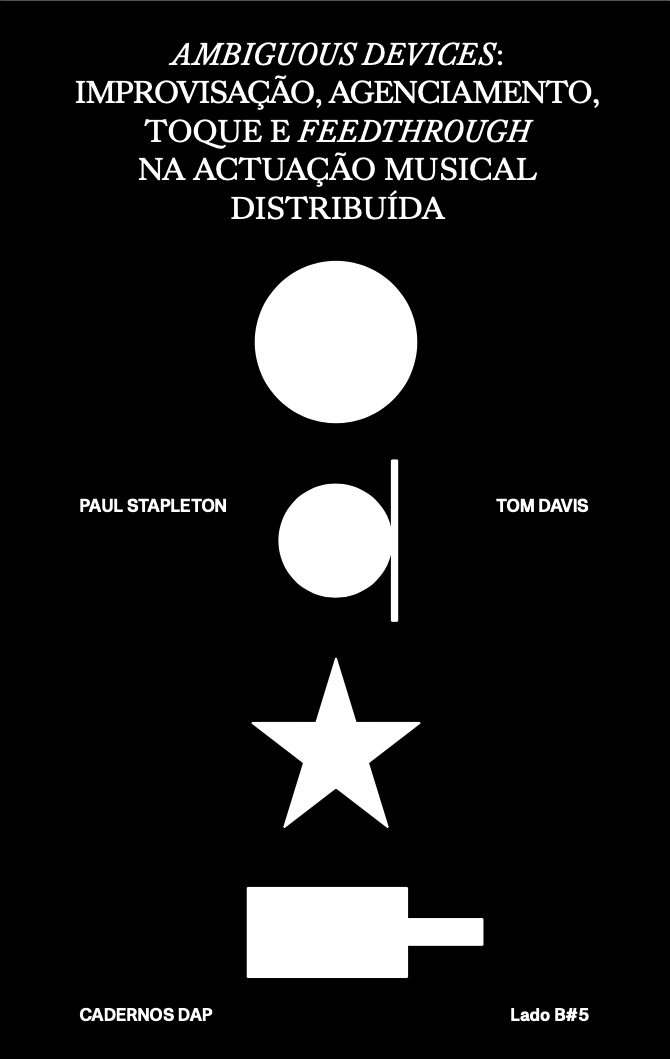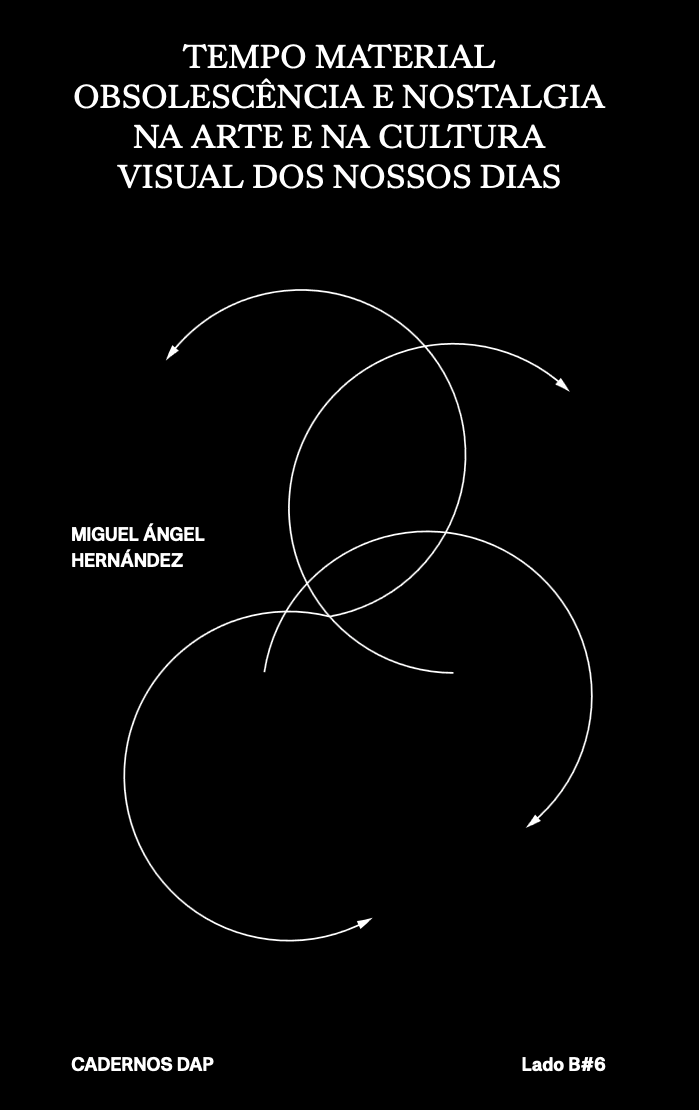
book
Lado B #4 — Nadin Mai
As práticas artísticas do nosso tempo apresentam uma característica muito singular e importante: correm em contra-corrente com a realidade política do mundo contemporâneo, no que diz respeito ao fechamento deste último face à cada vez maior abertura do primeiro.
One of the great aims of this Doctorate in Fine Arts has been to make visible the points that assert the current porosity of the several various borders existing in the art world. Those cracks, increasingly wider, have turned the artistic practices of our time into some sort of ecosystem in which different ways of produc- ing knowledge coexist. Prejudices regarding the various possi- bilities present are in clear decay. It no longer concerns only the different subjects in the field of the visual, but all other possible hypotheses at the level of what we know as senses. And, yet, one decisive element, unites all exteriorities in a single interiori- ty: time. Today’s artistic practices are daily confronted with their necessary resistance to the instantaneity of the present. The de- realization to which images, above all, and reality in general, are subject to, bound by a time that is no longer theirs, that was sto- len from them, in favour of another, machinic, artificial, requires a deep reflection on this very structural feature of our existence.
In the already distant year of 1962, George Kubler referred, quoted by Nicolas Bourriaud in his last book: “Actuality is when the lighthouse is dark between flashes: it is the instant between the ticks of the watch: it is a void interval slipping forever through time (…) Yet the instant of actuality is all we ever can know directly. The rest of time emerges only in signals relayed to us at this instant by innumerable stages and by unexpected bearers. These signals are like kinetic energy stored until the moment of notice”.1 Despite being distant, this is a statement that gains an unusual power these days.
Arts in general need a mediating element to embody and materialize their existence, both physical and significant. It is precisely this element that determines the moment in which the spectator is confronted with the work and in which it reveals to him a whole other time, which comes from behind, and which configures the possibilities of asserting himself as such. Peter Osborne says that the extended time that artists sometimes need to develop their work is decisively reflected in the way the viewer will receive them. This necessary time is, perhaps, the most important political element that artists can count on to continue producing works in really adverse conditions, that is to say, in times without time. In times without reflexive possibility.
The notion of contemplation was attacked for almost a century by a society that was fascinated with the “potentialities” offered by the new fast life that the last century began to offer. It was wrong on several levels, as we clearly see today. From the outset, because that speed, as Walter Benjamin very lucidly warned us through his angel of history, would lead us to a catastrophe. We are living it today at the various levels that we may want to call it: in the innumerable migratory currents; in endless wars as a causality of inhuman conditions for multitudes of refugees; in the imposition of a time that is absolutely external to a large part of the world’s population and which, this time, causes the aforementioned catastrophes, among many others. It is the time of the totalitarian imposition of digital speeds that are of great interest, for example, to the financial system, but which introduce a continuous disruption in our lives.
Therefore, the time has come to rethink the notion of contemplation. As a way of resistance to all these circumstances. Nadin Mai, the author of this book, ends her text by stating that what is known as “slow cinema” is a human form of cinema. She is absolutely right. This slow and contemplative making of cine- ma (like other arts) wants to reflect in itself and in a positive way the relationship with the human that is being taken away from us.
Information technologies, the so-called digital transitions, the closure that they seem to condemn us to by concentrating our entire lives on a single digital device is taking us away from our human condition and the necessary time we need to continue to be human.
In past texts I developed a notion that is consistent with that of “slow cinema”. I called this notion paragem: halt.
Because within the Portuguese word there are two paradoxically antagonistic verbs: stop (parar) and act (agir). And this stopping and acting is nothing less, nothing more, than an affirmation of the contemplative possibility, stripped of its pejorative character of connection with passivity. It is a question of restoring a truth here: contemplation was never passive, quite the contrary. It is, therefore, an active contemplation that is op- posed, rather, openly to a contemporary passivity based on the instantaneity that is imposed in everyday life.
“Slow cinema” as a human form of cinema is exactly this required attention to, let’s call it, necessary time. A time that is essential to be able to judge, to be able to appreciate, to be able to enjoy. A time that escapes the dictatorship of the machinic, the hyper-fast, the techno sublime, Jameson would say. And this is the time that art claims and that, in doing so, puts it in the position it always wanted to have. The one that enhances it as an alternative possibility to communication, which places it in that enviable position of “useless expense” as Battaile stated. A useless but truly human expense, far from the temporalities imposed by the idea of continuous growth, by the presence of catastrophe.
The text of this book is, therefore, of the greatest importance for all those who are interested in reality and its enjoyment, that is, in life. It is about life, about our lives, that the films mentioned by the author speak. And that life, referred to in this book, no matter how much global capitalism tries to suppress it with the instantaneousness of the “current”, needs all the time to be seen, referred to and, we risk, enjoyed, through the resistant (non-an- aesthetic, to use a notion dear to me) images they present.
If they are uncomfortable temporalities, if they provoke a kind of exteriority in the frenzy of daily life, rightly so. It is these truly important characteristics that make these forms of artistic practices and, in this particular case, that component of the art world known today as time-based art and, more specifically, of cinema, that give them the ability to continue. That put them, no longer in a closed dome, but in a situation of intrusion into reality. That they have the ability to cause a startle, if nothing else, because of the strangeness, even if familiar, that they exude when they assert themselves in such a strangely different way from the pandemic production of imagery in our timeless time. The latter are just leftovers and traces, “slow cinema” is the image in all its splendour.
And yet, let there be no misunderstandings. This whole discussion is absolutely outside any problem of formalism. These images, by being offered with the necessary slowness, bring us the increased possibility of their meanings asserting themselves without fear, without ambiguity. Exactly because they present themselves as carriers of a time that allows and enjoys all of that.
Nothing better than ending this short introduction with a quote from the author of the book, because it condenses in it an entire universe that we are trying to describe here:
“Slow cinema is not surface cinema. It is a mirror of our soul, it is a mirror of what is usually invisible, both on screen and off screen. What we see there is often what happens inside ourselves, but whose presence we do not recognize”.
Fernando José Pereira
Sobre Lado B
Num passado que já parece longínquo, em plana vigência analógica, os grupos musicais pop editavam com frequência os chamados singles. Aí colocavam a música que lhe parecia mais talhada para o sucesso imediato e, logicamente, numa intencionalidade mainstream esta era divulgada e massificada intensamente. Como todos recordam os discos analógicos tinham dois lados (hoje aí estão outra vez…) um denominado A e o outro, denominado B. O carácter secundário do outro lado permitiu, também, que parte importante da experimentação avançada pelos intervenientes activos de então aí fosse colocada. A lógica era simples, só os mais curiosos e atentos iriam virar o disco e escutar o outro lado, o lado B. O tempo veio colocar em destaque toda essa vertente experimental e de risco. Não são raros os casos em que a recuperação se faz exactamente a partir das músicas impressas no lado B. O outro lado aparece, hoje, como o mais interessante, longe da assimilação e trituração comercial a que foram sujeitos os lados A. O seu distanciamento e natural obscurecimento perante os spotlights, apontados ao lado principal, preservaram-nos e trouxeram-nos até nós, hoje ouvintes digitais, como obras primeiras. A metáfora aqui apresentada pretende, antes de mais, ser um ponto de partida para uma reflexão mais aprofundada sobre a premência do deliberado afastamento a que se remetem algumas obras e textos. A sua permanência ausente da crista da onda (metáfora analógica, mas com intencionalidade digital) permite-lhes um grau de risco e de experimentação que não é passível de ser realizado em sistema de recepção mainstream. É sobre eles que queremos reflectir, sobre a sua necessária lucidez, que as protege e distingue da torrente de acomodação e deslumbramento, fundamento último para a sua existência enquanto obras ou textos que querem resistir à actual voracidade e velocidade do novo. Sem intuitos morais de representantes oficiosos de qualquer tempo ou tecnologia, apenas como obras ou textos.
